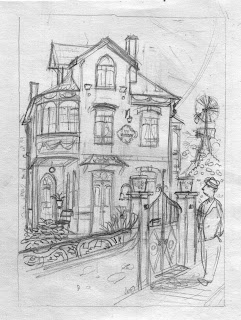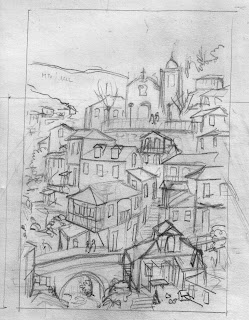


Not necessarily by this order, and may even appear some other I did and liked meanwhile...
But one of these is already on the way. Which one? I will not say ...
Não necessariamente por esta ordem, e podendo até surgir algum outro que entretanto tenha feito e gostado mais...
Mas há um destes que já está a caminho. Qual será? Não vou dizer...





6 comments:
oh you're such a tease Paulo! I'll be patiently waiting...
Maybe you don't have to wait so much, Sheila. It's advancing well!
Your preparatory sketches are great to look at. I see you put a lot of time into the organization of your paintings.
I try to make a sketch like this at least once a day, Stephen but sometimes I don't have time, or just nothing comes out after several attempts... I am keeping all from my previous works, and also thinking to post a few from time to time.
I love seeing your preparatory sketches! I am curious, Paulo, after you complete your sketches how do you go into the painting? Do you do any value sketches? Or do you next do washes on the paper to map it out? You have beautiful work and I always enjoy hearing about another artist's process. I hope you don't mind.
Thanks! Loriann
Hi, Loriann,
Usually I don't do value sketches or add washes to map the work:
When the drawing is transferred from the sketch to the watercolor paper and ready to paint, I have all the colors in my mind, as well as the light directions. Sometimes I add a few weak shadows in pencil to keep me reminded of those.
When adding colors, I start with the sky and background, including all of final details, and then I repeat this step coming to front little by little. Sometimes, depending of the atmosphere of the scene, I add a overall first wash before that process, with a large nº14 flat brush.
For larger surfaces just as the sky, I use a nº6 brush. For smaller surfaces and some shadows, I use a nº4 brush that became flat with use, and which I especially like, and for the smaller details a very thin nº3 pointed round brush.
I don't know if I could answer to your questions, because I never had painting classes and still a bit unaware of technical art language, especially in English, but if you have further questions I will be delighted to answer as much as I can.
Maybe in the future I'll make a post with all the process step-by-step, it would be much more comprehensive than my written explanation. How do you think?
Have a wonderful week, and keep on with your work, which I never miss to visit.
All the best,
Paulo
Post a Comment